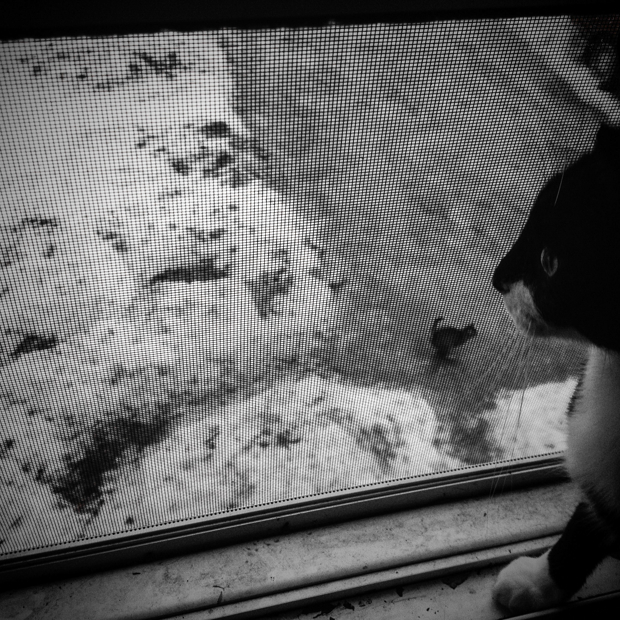Search this site
Artful and Disarming Photos of a Feral Cat Colony
Cats rule the Internet, this much is clear, but it is exceedingly rare to see serious depictions of the fine beasts. Beautifully counteracting this trend, yet still letting us look at cats, is Green Bay, Wisconsin-based photographer Jason Houge. Houge has been Instagramming the 20+ colony of feral cats that he and his girlfriend have been feeding and caring for since they moved into their rural home, with the help of local organization Cats Anonymous. Generally cats would come and go, but in 2012, a family of cats stayed for longer than one season. This was the start of Houge’s cat family, which has since grown to include more than twenty cats.
Feral cats reproducing rampantly is a huge problem, and Houge explains how it gets so out of control: “It’s likely most people have heard stories of hoarders who live with hundreds of cats. It only takes two intact cats and two or three years to get to that point. A female can have an average of five kittens three times a year and can become pregnant at about six months of age.” One of the most effective ways to keep this exponential increase in feral cats in check is through implementation of methods like “Trap-Neuter-Return” (TNR). TNR is a process in which volunteers, working both with organizations and independently, trap the cats, have them spayed or neutered, vaccinate them, and release them back into their colonies if they aren’t adopted, which most lifelong ferals are not. Humane societies around the country support this by providing these services at no charge.
Despite the dedicated individuals who spend much of their free time to try and counteract cat multiplication, they are in no way ahead of the problem. The cats just keep coming. And, it shouldn’t go without saying that breeders only exacerbate the problem since they directly decrease demand for adopted cats, leading to overcrowded shelters and euthanization, which happens even at “no-kill” shelters when overcrowding gets out of control.
People, of course, have lived with cats for eons. About the history of cat colonies, Houge writes, “Some very notable populations came up in my research—Rome, Jerusalem, Tashirojima,—an island in Japan where cats outnumber humans, and of course the Hemingway polydactyls of Key West, Florida—all of which are healthy populations where the cats are protected by, interact with, and rely on the human element to survive.”
The photographer is currently raising funds to care for the cats via GoFundMe. Donate here.
Via LENS. For more cat photos, follow Jason Houge on Instagram. Print sales help fund the care and feeding of Houge’s cats; prints can be purchased here.














